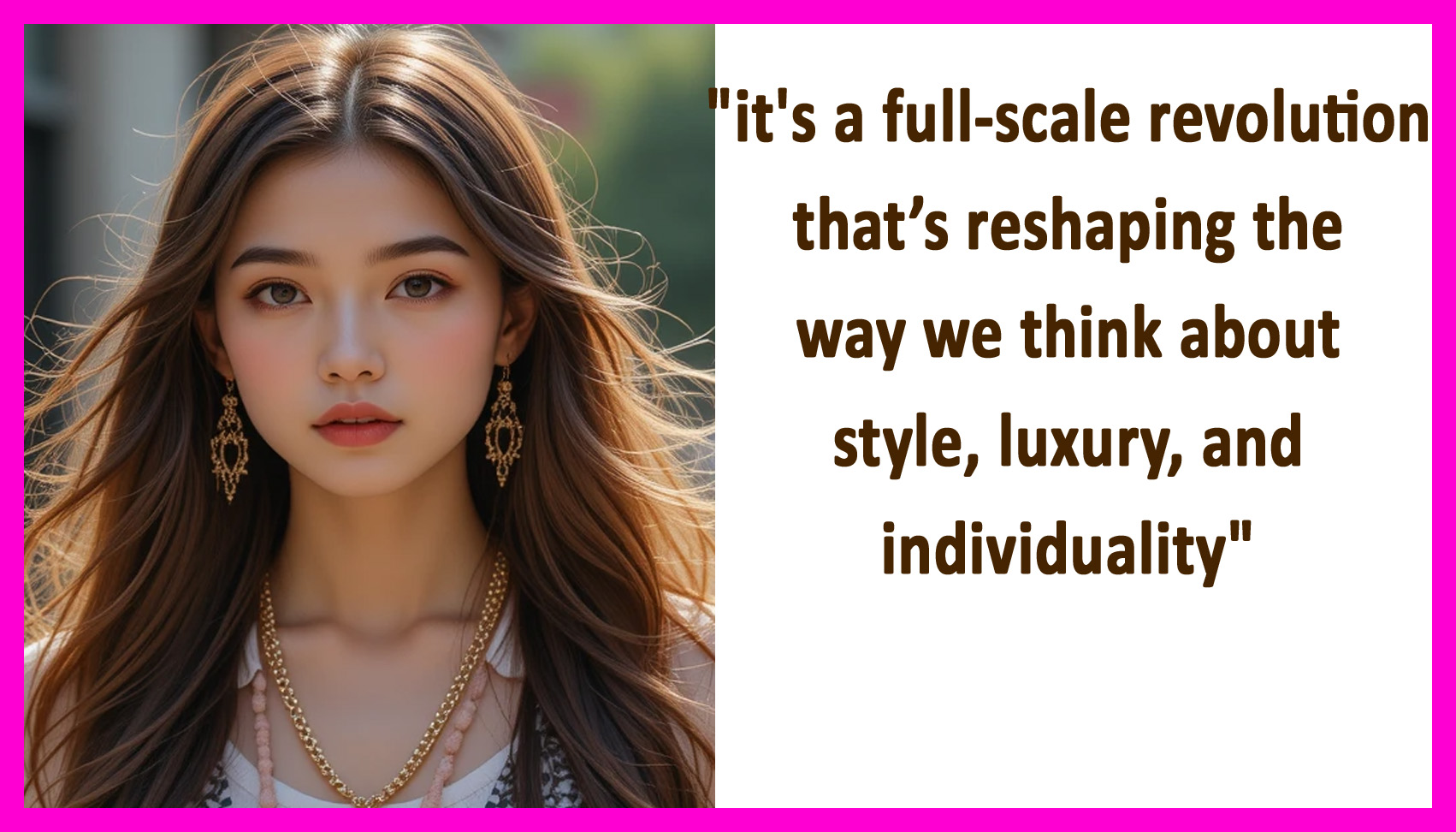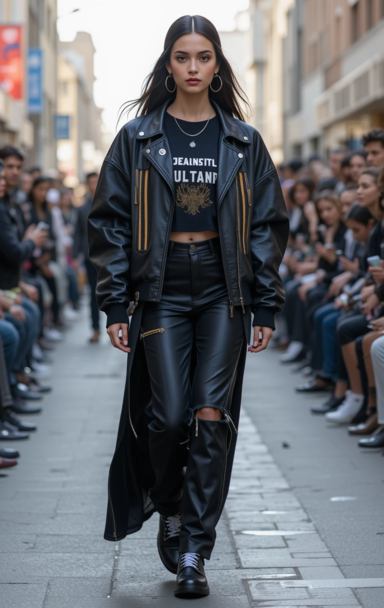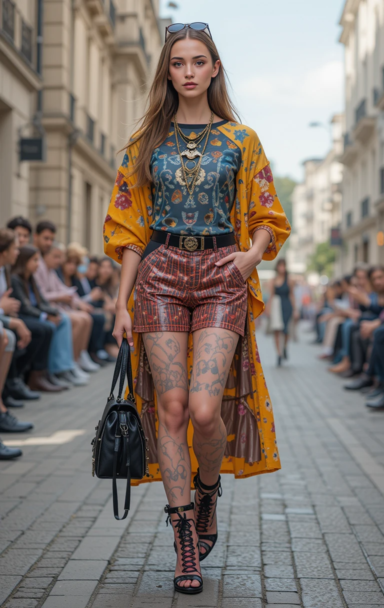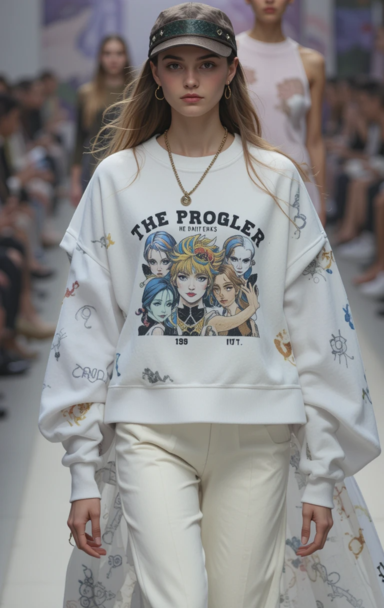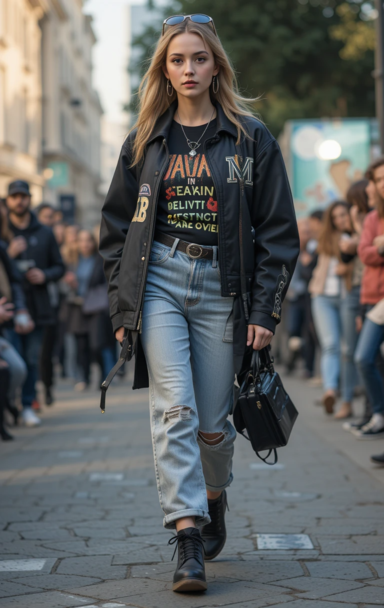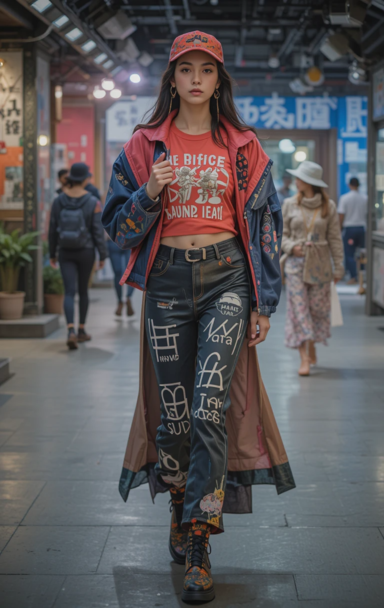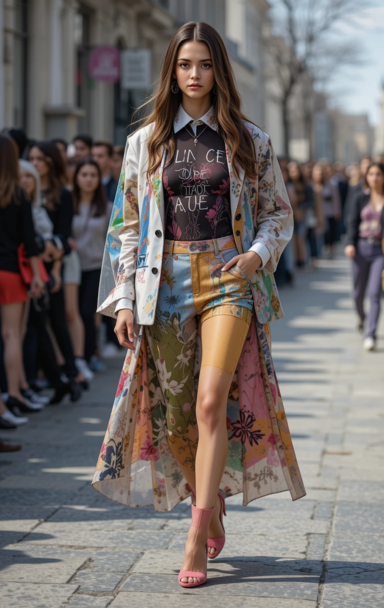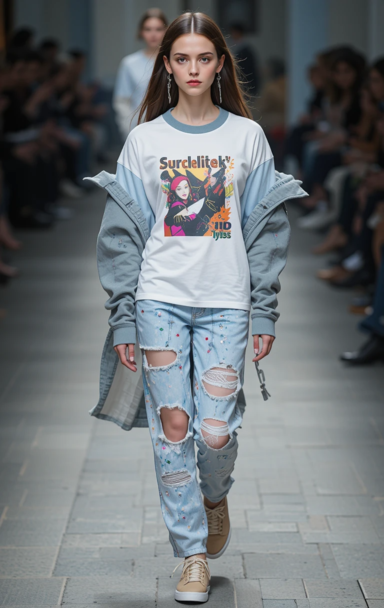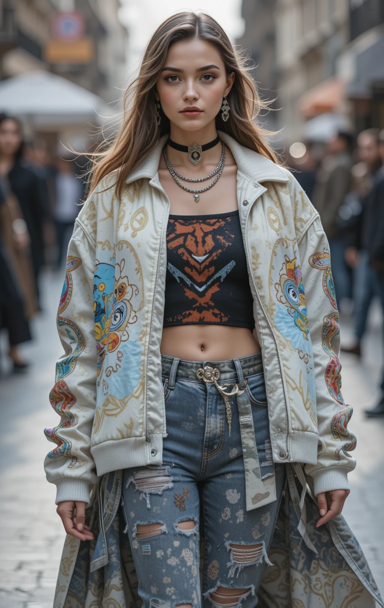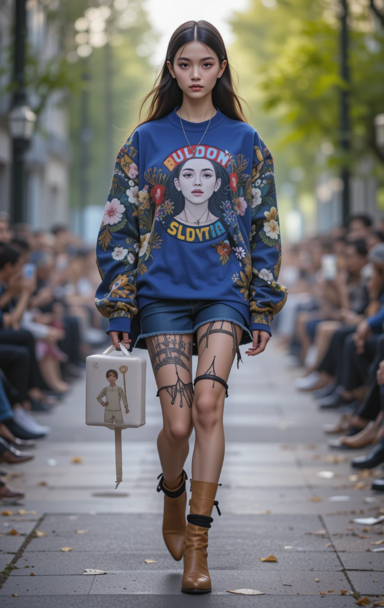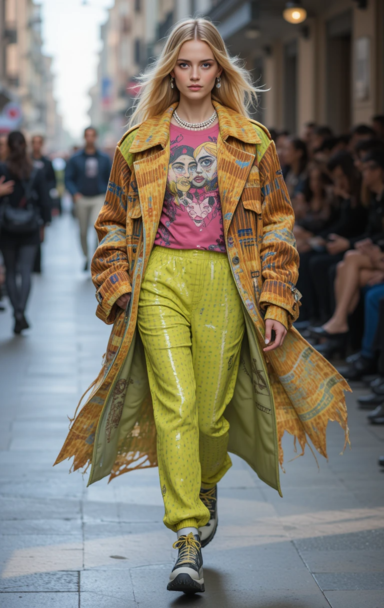From Street to Catwalk: How Streetwear is Influencing High Fashion for Women
The lines between high fashion and streetwear are becoming increasingly blurred, and the transformation is especially visible in the realm of women’s fashion. Over the past decade, streetwear has emerged as a dominant force within the fashion industry, moving from the streets into the spotlight of haute couture. Today, this cultural shift is more than just a passing trend — it’s a full-scale revolution that’s reshaping the way we think about style, luxury, and individuality. In this article, we’ll explore how streetwear has gone from humble beginnings on the streets to influencing the glamorous world of high fashion for women.
A Brief History of Streetwear
Streetwear’s roots lie in the urban culture of the 1980s and 1990s, primarily in cities like New York, Los Angeles, and Tokyo. Born out of skateboarding, hip-hop, and the DIY ethos of punk, it was a style that celebrated individuality and self-expression. In the early days, brands like Stüssy, Supreme, and Bape (A Bathing Ape) began to dominate the scene, combining functional, comfortable clothing with bold graphics, logos, and a rebellious attitude.
What started as a subculture, however, soon became a global phenomenon. Streetwear’s primary appeal was its connection to music, art, and youth culture. It was a symbol of counterculture, rejected by mainstream fashion but embraced by an ever-growing group of consumers who saw it as an authentic expression of who they were. The sneakers, oversized hoodies, graphic tees, and beanies were not just articles of clothing; they became statements about lifestyle, social identity, and attitude.
By the mid-2000s, streetwear began to infiltrate the mainstream fashion industry. Celebrities, athletes, and musicians began wearing these once underground brands, fueling the rise of street-inspired luxury fashion. Fast forward to today, and streetwear has evolved from a niche subculture to a dominant force in the global fashion industry.
Streetwear Meets High Fashion: The Crossroads of Culture
High fashion, which was once reserved for the elite and exclusive circles of luxury, has undergone a massive transformation. Designers who once dismissed streetwear as unrefined or too casual have now embraced it as a legitimate style category. The democratization of fashion and the changing tastes of modern consumers have played a pivotal role in this shift.
One of the most significant milestones in the crossover between streetwear and high fashion was the rise of Virgil Abloh, the founder of Off-White and creative director for Louis Vuitton’s men’s wear division. Abloh, who began his career in the fashion industry as a creative director for Kanye West, brought streetwear to the highest echelons of fashion by combining luxury with street-influenced aesthetics. His collaborations with high-end brands like Nike, Ikea, and Louis Vuitton brought an unprecedented level of attention to the intersection of streetwear and couture.
Another important figure in this movement is Alessandro Michele, the creative director of Gucci. Under his leadership, Gucci underwent a radical transformation, incorporating elements of streetwear into the brand’s collections. From chunky sneakers and logo-centric designs to oversized fits and graphic prints, Gucci’s modern aesthetic shows how streetwear has influenced high fashion in a major way.
What these designers understand is that streetwear is more than just a fashion trend — it is an expression of culture. By integrating streetwear into their collections, high-fashion houses have tapped into the pulse of contemporary youth culture, creating a more inclusive, diverse, and dynamic approach to luxury.
How Streetwear is Reshaping Women’s Fashion
The influence of streetwear on women’s fashion has been particularly significant in recent years. Traditionally, high fashion for women has been about elegance, sophistication, and a certain level of opulence. The tailoring, delicate fabrics, and intricate detailing used to dominate the runway, with an emphasis on femininity and refinement. Streetwear, however, introduced a new perspective. Comfort, athleticism, and utility began to take precedence. Suddenly, the focus shifted from traditional notions of beauty and femininity to a more inclusive vision of style.
1. Gender Fluidity and Empowerment
One of the most important aspects of streetwear is its disregard for traditional gender norms. As streetwear has become more mainstream, women have begun to embrace styles that were once considered masculine, such as oversized hoodies, baggy pants, and graphic tees. The androgynous, utilitarian, and often unstructured silhouettes of streetwear have allowed women to step outside the confines of the traditionally restrictive nature of high fashion.
High-fashion designers have adopted this gender-fluid approach, breaking down the barriers between men’s and women’s clothing. This shift has empowered women to wear what makes them feel confident and comfortable, rather than being restricted by preconceived notions of femininity. Brands like Balenciaga and Vetements have integrated streetwear-inspired elements into their women’s collections, embracing the oversized fits, bold logos, and sporty aesthetics that are hallmarks of the streetwear style.
2. Sneakers as Fashion Staples
The sneaker craze is one of the most significant ways in which streetwear has influenced high fashion. Sneakers, once considered purely athletic wear, are now a staple in high-end women’s fashion. In fact, luxury brands have embraced sneakers in ways that once seemed unimaginable. Fashion houses such as Chanel, Louis Vuitton, and Dior have launched their own high-end sneaker lines, and collaborations between streetwear brands like Supreme and luxury houses like Louis Vuitton have blurred the lines between luxury and everyday streetwear.
What makes sneakers such a significant part of this shift is their democratizing power. Unlike heels or designer handbags, which can often be inaccessible for many, sneakers offer a versatile and comfortable option that is embraced by people of all walks of life. Women can now pair luxury sneakers with everything from skirts and dresses to suits and tracksuits, making them an essential part of the modern wardrobe.
3. Logos and Branding: The Rise of ‘Logomania’
In streetwear, logos have always been more than just brand identifiers; they represent identity, status, and social affiliation. The prominence of logos in streetwear — particularly the bold and graphic designs seen on sweatshirts, T-shirts, and outerwear — has been embraced by the high-fashion world. The rise of “logomania” in recent years is a direct response to streetwear’s influence. High-fashion brands like Balenciaga, Fendi, and Versace have all incorporated oversized logos and brand names into their collections, making them central to the design process.
This trend towards visible branding represents a departure from the subtlety and understated elegance that was once the hallmark of high fashion. Today, it’s all about making a statement with logos and graphics, and women’s fashion is no exception. Whether it’s the large “CC” logo of Chanel or the bold “Vuitton” monogram, logos are now a central component of high-end collections, showcasing how the influence of streetwear has permeated even the most traditionally exclusive brands.
4. Collaborations and Limited-Edition Drops
One of the most significant trends in the fashion world today is the rise of limited-edition collaborations. Streetwear brands like Supreme, Off-White, and Bape have long understood the power of scarcity, releasing exclusive collections that create buzz and hype. This concept has now found its way into high fashion, with luxury brands collaborating with streetwear giants to create exclusive and highly sought-after collections.
For women, these collaborations represent an opportunity to access high-end fashion with a unique streetwear edge. From Nike’s collaborations with Sacai to Gucci’s partnership with The North Face, these collaborations fuse the best of both worlds, creating items that are both luxurious and accessible to a broader audience. The concept of “drops” — exclusive, time-sensitive releases — has also become a hallmark of this new era, adding an element of excitement and anticipation to the fashion landscape.
5. Sustainability and Streetwear’s Ethical Impact
Another area where streetwear is influencing high fashion for women is in the growing emphasis on sustainability. Streetwear brands have long been associated with a more sustainable, DIY ethos, and this mindset is beginning to influence luxury fashion. Brands like Patagonia and Stüssy have led the way by embracing eco-friendly materials and production methods. This shift toward sustainability is now being mirrored in the luxury fashion world, where high-end designers are beginning to prioritize ethical and sustainable practices.
Many streetwear-inspired collections for women now focus on using recycled materials, ensuring fair labor practices, and minimizing waste. This trend is particularly important in women’s fashion, where the demand for sustainability continues to grow. By embracing these ethical values, streetwear has pushed high fashion towards a more responsible future.
Conclusion: The Future of Streetwear in Women’s High Fashion
The marriage between streetwear and high fashion is not a fleeting trend but a lasting transformation in the way we approach clothing, identity, and culture. From sneakers to oversized silhouettes, logos to collaborations, streetwear has introduced a new set of values and aesthetics that are reshaping high fashion for women. This cultural shift has made fashion more inclusive, diverse, and accessible, while also challenging traditional notions of beauty and femininity.
As the fashion world continues to evolve, it’s clear that the influence of streetwear will only grow stronger. With designers embracing the rebellious, creative spirit of streetwear, the future of women’s fashion is poised to be even more dynamic and innovative. From the streets to the catwalk, streetwear has proven that it’s not just a passing phase — it’s a movement that is here to stay.

